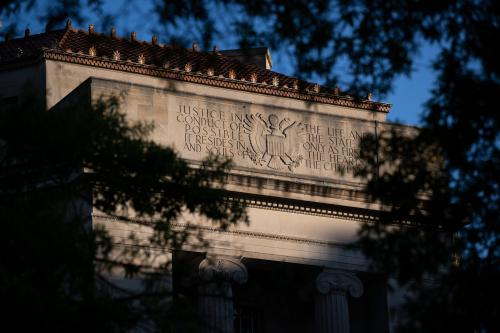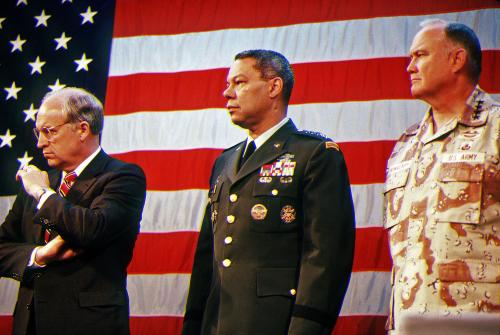Rarely does a country fight the same war twice in one generation. Even rarer is to fight it twice from opposite sides. Yet that is in many ways what America is doing today in Afghanistan. In the 1980s the CIA engineered the largest covert operation in its history to defeat the Soviet army in Afghanistan working from a safe haven in Pakistan. Today America is fighting a Taliban-led insurgency in Afghanistan operating from a safe haven in Pakistan. Many suggest that the outcome will be the same for America and its NATO allies as it was for the Soviet Union—ultimate defeat at the hands of the insurgency. That analysis misses the many fundamental differences between the two wars. But it is also important to note the one major similarity between them: the key role played by Pakistan, which could again determine the outcome.
The most critical differences are goals and objectives. America intervened in Afghanistan in 2001 on the side of the Northern Alliance to topple the Taliban Islamic Emirate of Afghanistan only after it had been used as a base for the September 11th 2001 terrorist attacks in America. The American goal, endorsed by the UN and NATO, was self-defence against a government that had allowed its territory to be used for an act of war against another state. From the beginning, America has had no ambition to dominate or subjugate the Afghan people, or to stay in Afghanistan once the threat posed by al-Qaeda had been removed and the Taliban defeated. President Barack Obama said this again in his speech outlining his new policy for Afghanistan and Pakistan on March 27th 2009.
The Soviet invasion in 1979 was a different matter. Its goal was to shore up a communist regime that was on the brink of collapse. The Soviet leadership wanted an Afghanistan that would be like other Soviet satellite states, that is, under virtual Soviet imperial rule with only the façade of independence.
The Soviet invasion and the attempt to impose communism on a rural and largely illiterate Islamic country produced the predictable result: a mass national uprising. In contrast, polls show most Afghans have supported the coalition forces that overthrew the Taliban from 2001 onwards, although that support is now dwindling as the coalition has failed to provide law and order and reconstruction. The Taliban insurgency is very much restricted to the Pashtun community. It has little appeal to the almost 60% of Afghans who are not Pashtun. The Soviet Union’s task was much more difficult than the one facing NATO today.
The Soviets responded with a ferocity and brutality that made the situation even worse. At least 1.5m Afghans were killed, another 5m or so fled the country to Iran and Pakistan, and millions more were displaced inside the country. A country that began the war as one of the poorest in the world was systemically impoverished and even emptied of its people. The Soviets carpet-bombed cities such as Kandahar, whose population fell from 250,000 to 25,000. Millions of land mines were planted all over the country, with no maps kept of where they had been laid. Nothing even approaching this level of horror is happening today in Afghanistan.
If the differences between the American and Soviet experience are significant, there is also at least one major similarity: the role played by Pakistan. In the 1980s, Pakistan was the base for the Saudi-American alliance behind the mujahideen. Today, Pakistan is the safe haven of the Taliban insurgency and its logistical supply line. Pakistan also serves as the major logistical line for the NATO forces in Afghanistan. Over 80% of the supplies coalition forces depend on to survive arrive via Pakistan from the port of Karachi. Geography effectively precludes an alternative, unless the alliance is willing to rely on either Russia or Iran for its logistics.
So Pakistan has unusually strong leverage on both sides of the war. This winter, Pakistani police for the first time began arresting senior Afghan Taliban leaders, but the campaign was not sustained and proved to be a one-off. It is widely assumed in Pakistan that American and European patience to fight it out in Afghanistan is eroding, an assumption reinforced by polls that show support for the conflict steady declining on both sides of the Atlantic. Mr Obama’s mid-2011 deadline has been interpreted by many as signalling an early withdrawal, despite his aides’ attempts to suggest otherwise.
Pakistan’s passive support of the Taliban is thus a useful hedge against the day when NATO decides to start pulling out and gives up the struggle. Pakistan will then have a relationship with the Pashtun future of southern and eastern Afghanistan and will have an asset in the struggle for post-NATO Afghanistan. Thus it is crucial that the alliance makes it clear to Islamabad that the Taliban are not going to succeed on the battlefield and that Pakistan must aggressively weaken both the Afghan and the Pakistani Taliban.
There is no inherent reason for the NATO war in Afghanistan to follow the pattern of the Soviet war. The differences between the two outweigh the similarities, especially in what most Afghans want for their country. While pundits may find the cliché that Afghanistan is the graveyard of empire simplistically attractive, there is every reason to believe smart policies can avoid such an outcome—but much depends on Pakistan.


Commentary
Op-edPakistan’s Role in the Afghanistan War’s Outcome
May 20, 2010